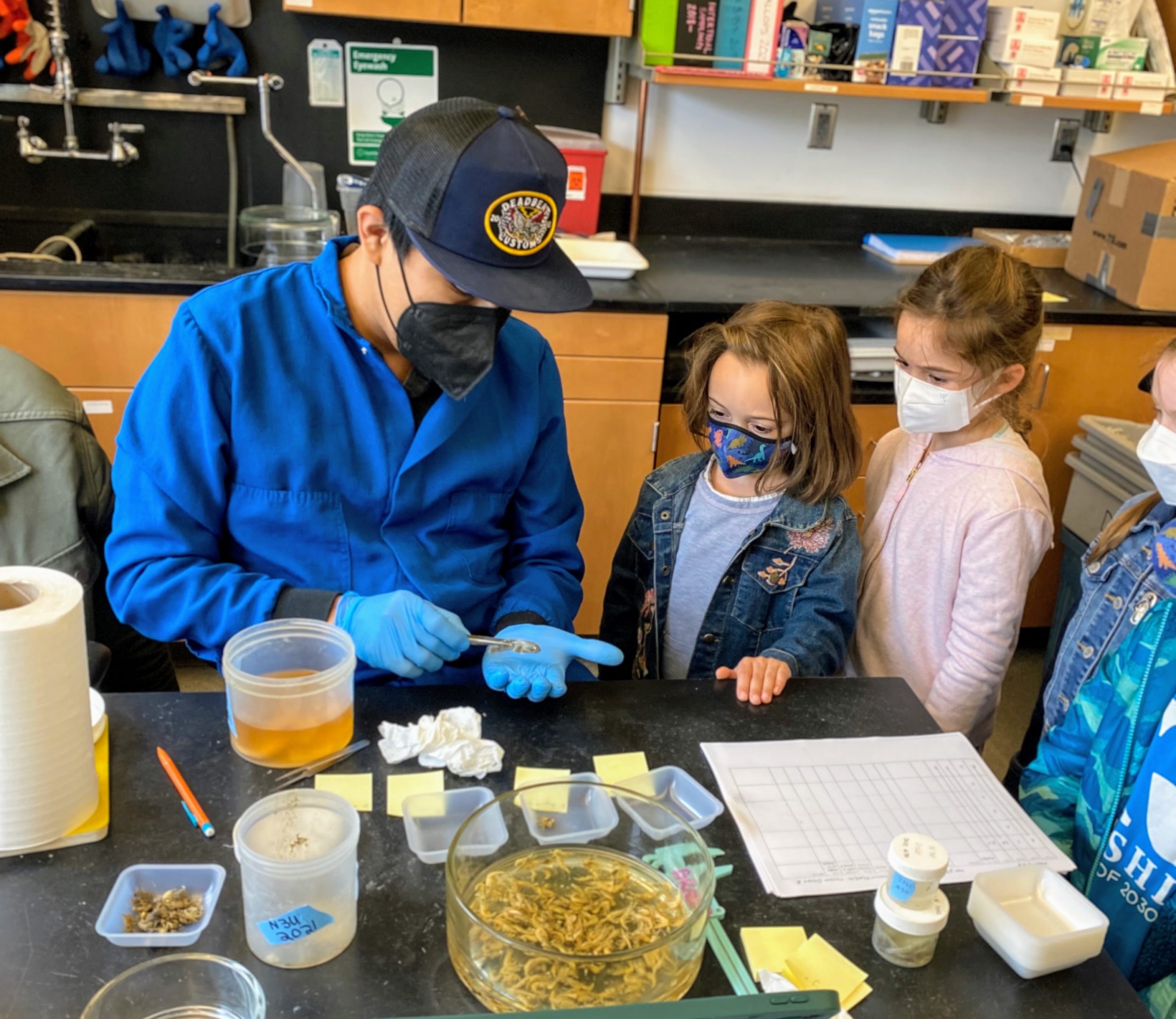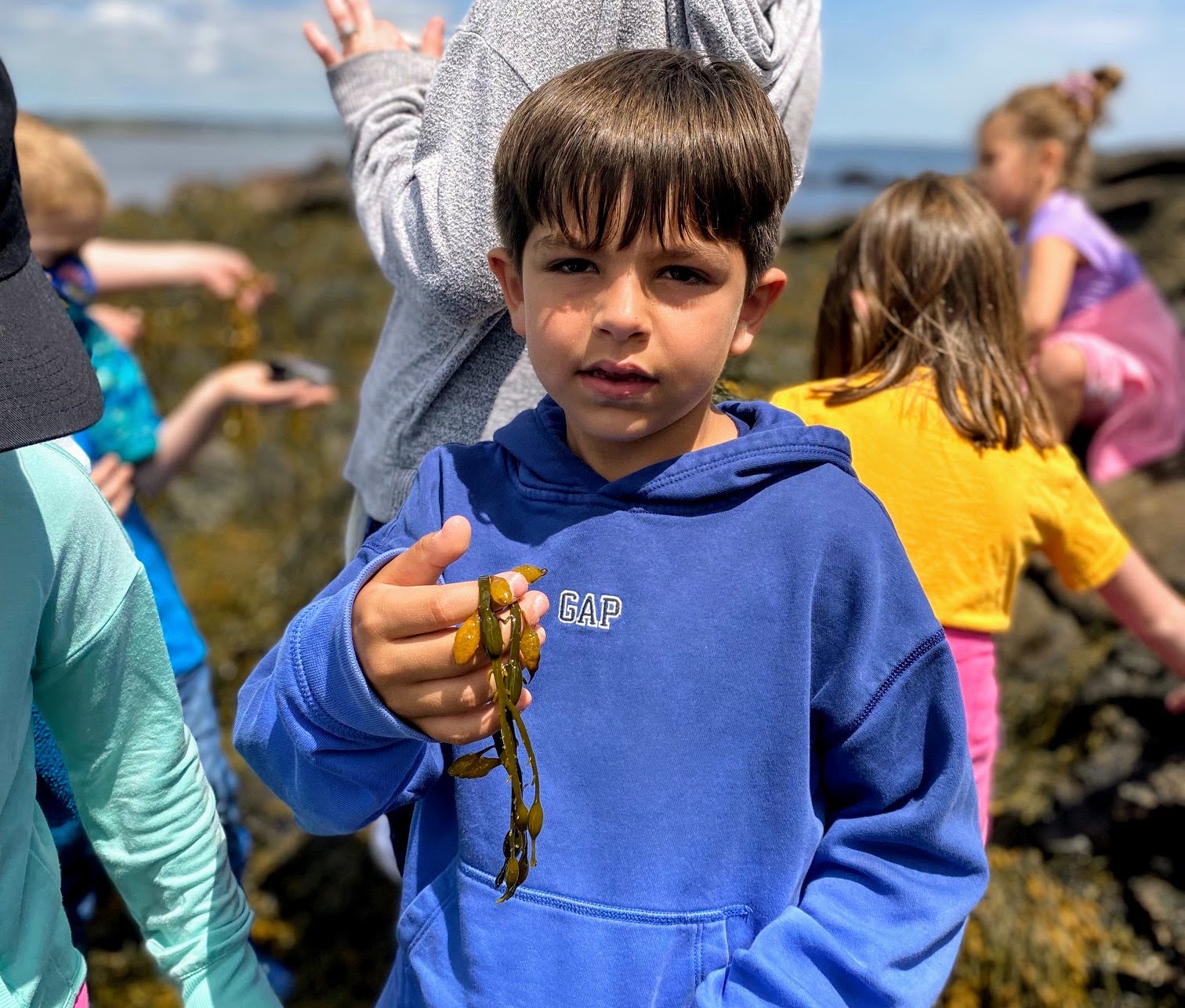Rashi’s Kindergarten class went on its first field trip in three years to Northeastern University’s Marine Science Center. From the moment they exited the bus, the children were full of energy and excitement for what they might see and learn as they were greeted by the center’s science educators.  The class first shook their bus-legs out with a fun, interactive game where they practiced their sea creature-like movements. One educator would yell “octopus!” and off they’d go in a wiggly cluster before hearing them shout “barnacle!” after which they had to stay still, learning that barnacles cannot move on their own. They took this knowledge into the center’s classroom, expanding it with a presentation on the local species found off the coast of Nahant. Students were then broken into two groups, each cycling through three main activities: touch tank and lab tours, specimen observation and sorting techniques, and live specimen searching in the tide pools and on the beach.
The class first shook their bus-legs out with a fun, interactive game where they practiced their sea creature-like movements. One educator would yell “octopus!” and off they’d go in a wiggly cluster before hearing them shout “barnacle!” after which they had to stay still, learning that barnacles cannot move on their own. They took this knowledge into the center’s classroom, expanding it with a presentation on the local species found off the coast of Nahant. Students were then broken into two groups, each cycling through three main activities: touch tank and lab tours, specimen observation and sorting techniques, and live specimen searching in the tide pools and on the beach. 
 The children met scientists in the field as they returned from a dive, handing off a bag of creatures they had found underwater. Students then took the collection to the touch tanks, feeling each crab, snail or sea star before introducing them to their new home in the facility. They also learned that some animals prefer sandy environments, and some rockier ones. They then got to meet more scientists as they worked in their laboratories, examining ethanol-preserved fish. The scientists explained their process of finding and preserving creatures so they can study them for extended periods of time, leading them to better understand the species they’re working with. Before going out into the field themselves, the Kindergartners looked through microscopes at specimen samples, viewing their traits and adaptations up close. They also practiced using other scientific tools like quadrats, square frames that allow them to observe sample-sizes of their environment, salinity meters, and thermometers.
The children met scientists in the field as they returned from a dive, handing off a bag of creatures they had found underwater. Students then took the collection to the touch tanks, feeling each crab, snail or sea star before introducing them to their new home in the facility. They also learned that some animals prefer sandy environments, and some rockier ones. They then got to meet more scientists as they worked in their laboratories, examining ethanol-preserved fish. The scientists explained their process of finding and preserving creatures so they can study them for extended periods of time, leading them to better understand the species they’re working with. Before going out into the field themselves, the Kindergartners looked through microscopes at specimen samples, viewing their traits and adaptations up close. They also practiced using other scientific tools like quadrats, square frames that allow them to observe sample-sizes of their environment, salinity meters, and thermometers. 
 To finish out the day, the class went outside to the tide pools and shoreline. Using their quadrats, they searched alongside the scientists and educators to find crabs, shrimp, snails, and seaweed in their natural habitats. They successfully used everything they learned leading up to their final outing, experiencing wildlife in a joyful, informative, and hands-on way.
To finish out the day, the class went outside to the tide pools and shoreline. Using their quadrats, they searched alongside the scientists and educators to find crabs, shrimp, snails, and seaweed in their natural habitats. They successfully used everything they learned leading up to their final outing, experiencing wildlife in a joyful, informative, and hands-on way.

